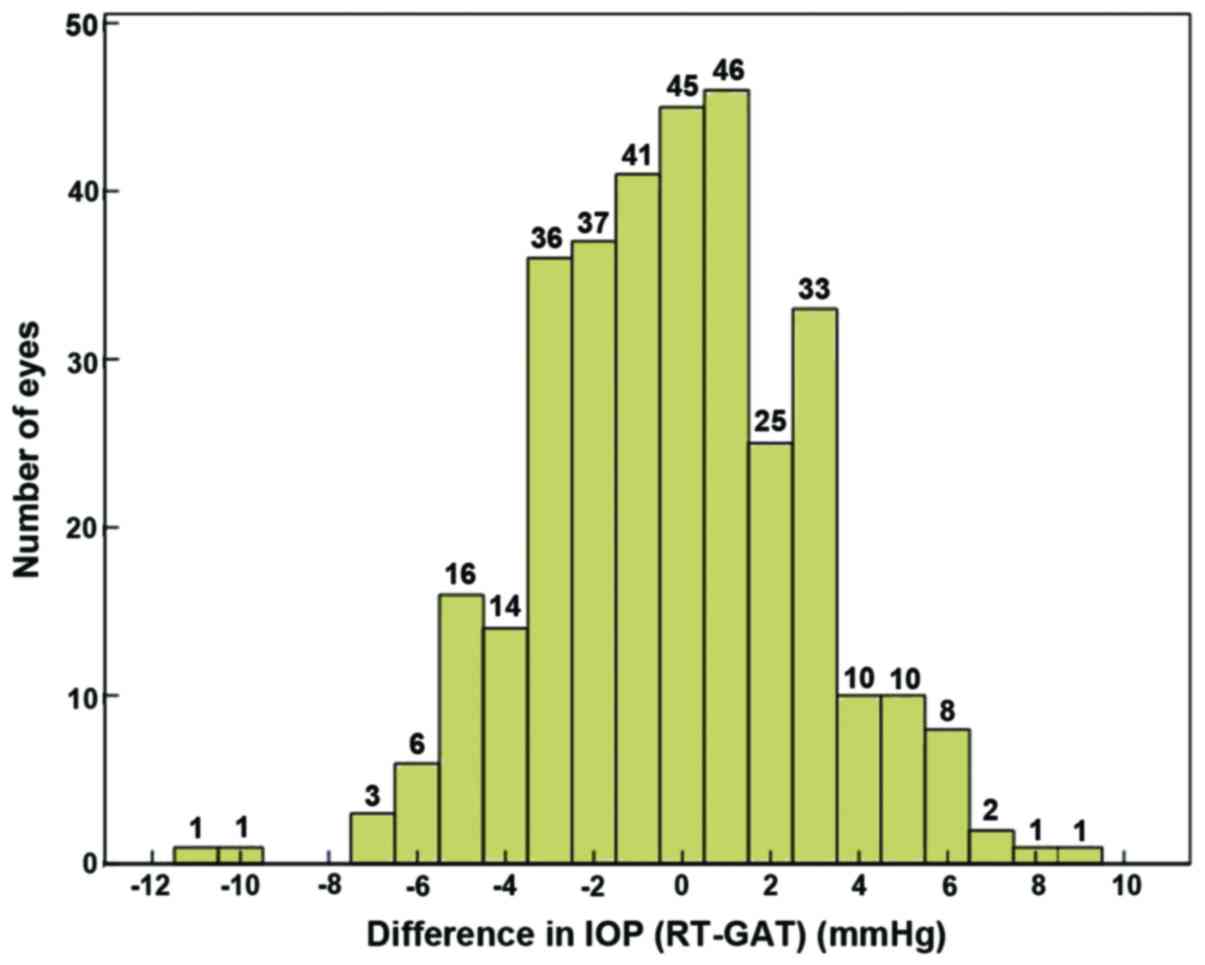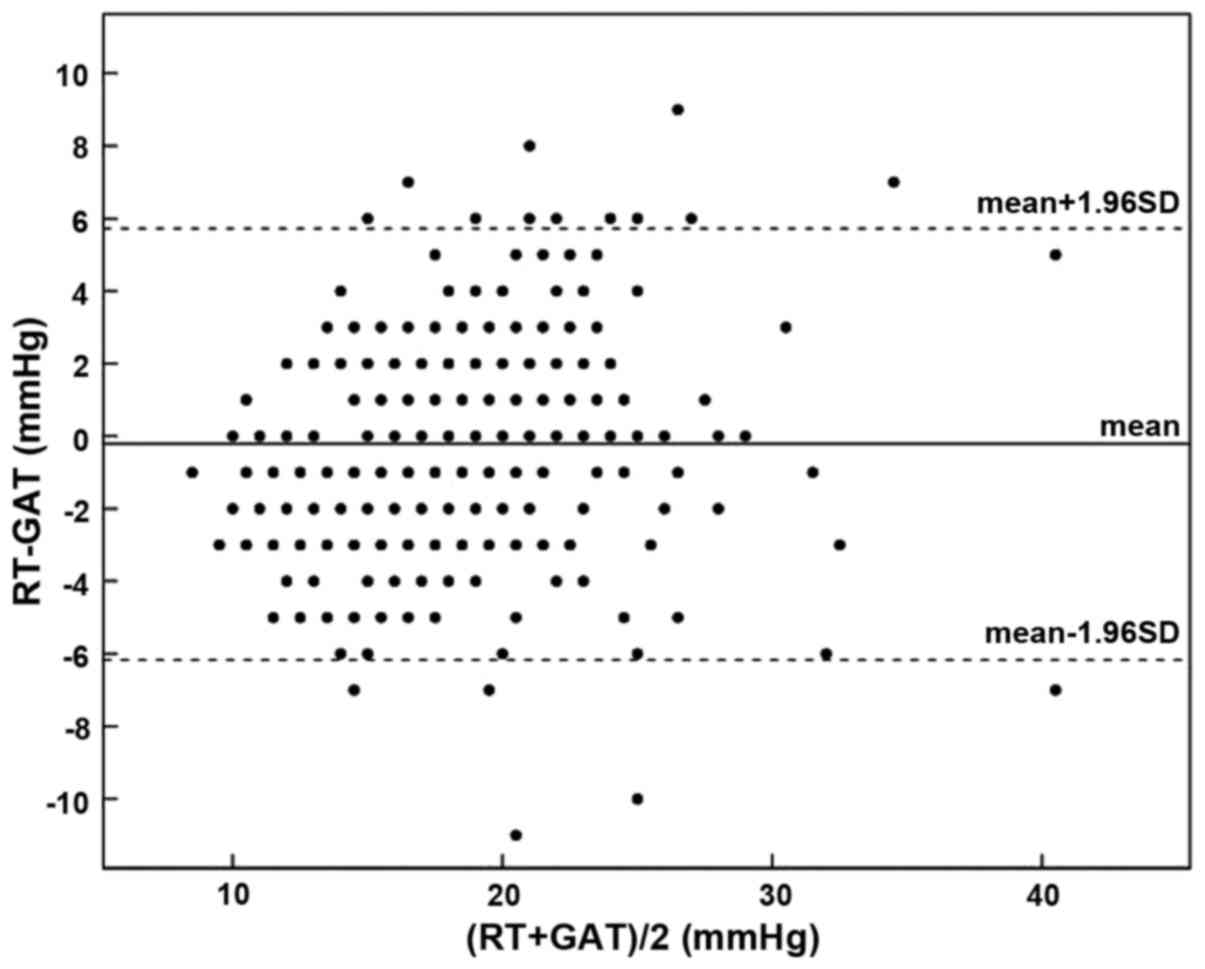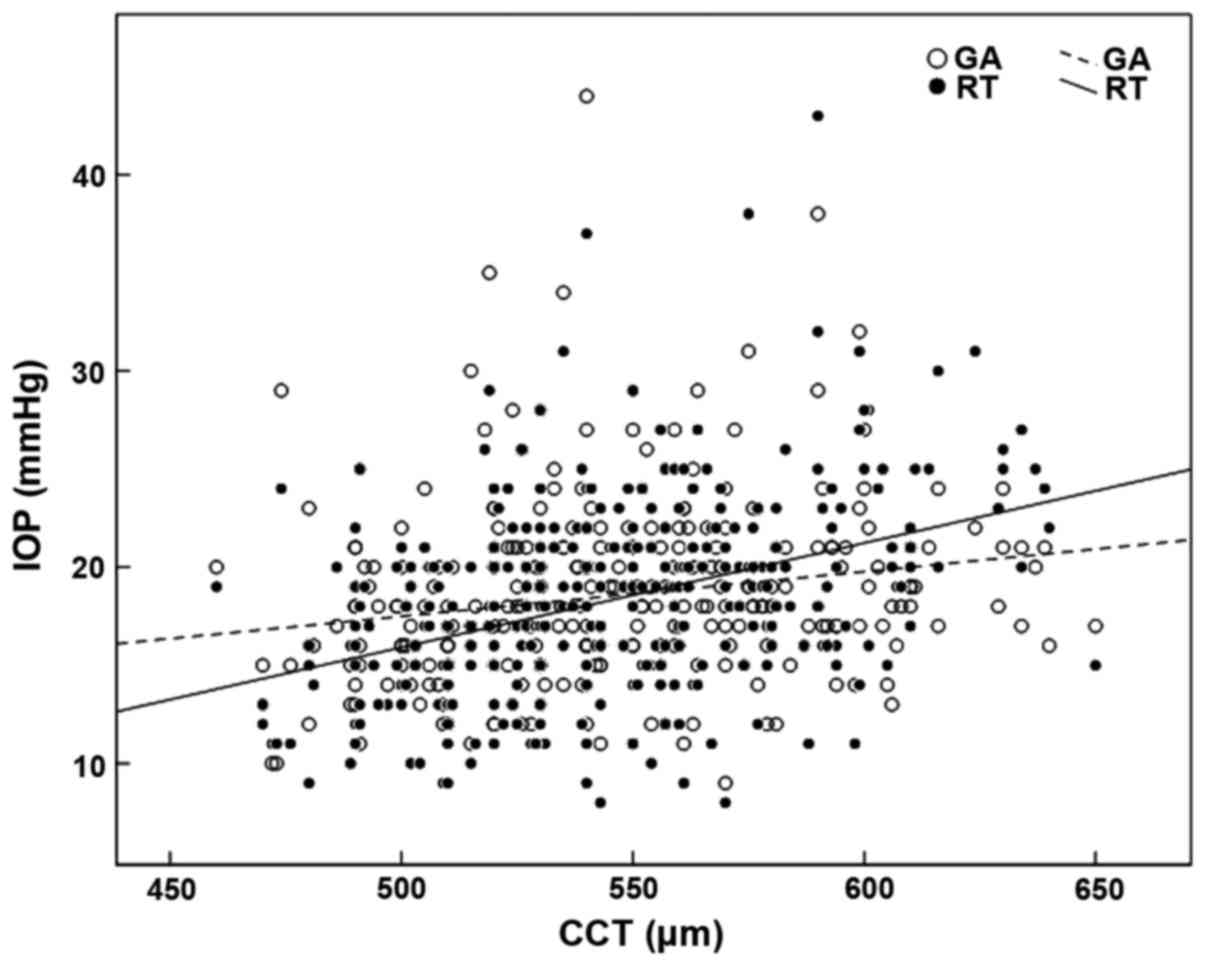Comparison of the iCare rebound tonometer and the Goldmann applanation tonometer
- Authors:
- Published online on: February 24, 2017 https://doi.org/10.3892/etm.2017.4164
- Pages: 1912-1916
-
Copyright: © Gao et al. This is an open access article distributed under the terms of Creative Commons Attribution License.
Metrics: Total
Views: 0 (Spandidos Publications: | PMC Statistics: )
Total PDF Downloads: 0 (Spandidos Publications: | PMC Statistics: )
Abstract
Tonometry is a fundamental procedure in routine ophthalmologic examination. Although regarded as the reference standard, the Goldmann applanation tonometer (GAT) has its limitations. A new portable alternative to the GAT is the iCare rebound tonometer (RT). The aim of the present study was to compare the intraocular pressure (IOP) results obtained using the RT and GAT and then correlate the results with the central corneal thickness (CCT). Moreover, the tolerability and safety of the RT were evaluated. The IOP of 336 patients (672 eyes) was determined by the RT and GAT. The patients were divided into three groups (group A, 7-15 mmHg, n=74; group B, 16-22 mmHg, n=218; and group C, 23-50 mmHg, n=44), based on the GAT IOP readings. Pachymetry and slit lamp inspection were also performed. To establish an agreement between the devices, a Bland-Altman analysis and paired t-test were performed. The correlation between CCT and IOP readings obtained by the two devices were assessed using linear regression correlation analysis. The mean IOP values of the RT and the GAT were 18.30±5.10 and 18.52±4.46 mmHg, respectively. There were no significant differences between them (t=-1.31, P=0.19). The 95% confidence interval of the differences between the two devices was -5.80-6.24 mmHg. The RT readings are correlated well with those of GAT (r=0.806, P=0.001). However, the RT measurements were significantly (t=-2.84, P=0.007) lower (-1.66±3.87 mmHg) than those obtained with GAT when GAT ≥23 mmHg. Both the RT (r=0.390, P=0.001) and the GAT (r=0.191, P=0.001) showed positive correlations with CCT. The IOP measurement with RT was well tolerated. None of the corneal epithelial defects was detected and all subjects denied discomfort. The RT is well tolerated and safe, and can be considered a reliable alternative to GAT for patients in a low to moderate IOP range. However, in patients with high IOP values, the measurements obtained with RT did not correlate well with those obtained by GAT. The RT readings are influenced more by CCT compared to GAT.












